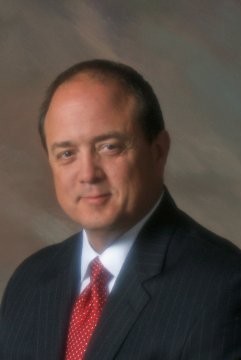Thoughts from current Members of the Committee on Qualifications
Ten years have passed since the current edition of Qualification Standards for Actuaries Issuing Statements of Actuarial Opinion in the United States (the USQS) took effect Jan. 1, 2008. The 2008 USQS is the culmination of several decades of effort; the Academy began issuing Qualification Standards in the 1970s. In the intervening years, many Academy volunteers have contributed to the development of the qualification standards and have responded to questions from members about the USQS. The current members of the Committee on Qualifications (COQ) thank all those who have come before them and offer some reflections on the significance of the USQS.
The USQS was a watershed
 By Keith Passwater
By Keith Passwater
The USQS was a watershed for many reasons. Perhaps the most important is that the USQS significantly broadened the applicability of pre-2008 qualification standards by introducing the term Statement of Actuarial Opinion (SAOs), defined as “an opinion expressed by an actuary in the course of performing Actuarial Services and intended by that actuary to be relied upon by the person or organization to which the opinion is addressed.” The pre-2008 qualification standards applied only to Prescribed Statements of Actuarial Opinion (PSAOs), which included statements made to comply with a law, regulatory requirement, or an ASOP. They did not apply to most actuarial opinions and the actuaries rendering them, which posed a risk not just to principals, who may have retained actuaries not subject to qualification standards, but also to the credibility of the profession. The 2008 USQS resolved this risk by expanding the definition of SAO—now, virtually all U.S. actuaries credentialed by any of the five U.S.-based actuarial organizations perform work that includes the issuance of SAOs and, therefore, are subject to the basic education, experience, and continuing education (CE) requirements of the USQS. This was an important change: Our credentials are only valuable if principals can be confident that those carrying actuarial credentials are qualified to render opinions.
The duty of qualification
 By Andrea Sweeny, COQ chairperson
By Andrea Sweeny, COQ chairperson
The duty to be competent is the bedrock of professionalism. One of the reasons the USQS exists is to help ensure professional competence, which the Code of Professional Conduct requires of all credentialed actuaries rendering actuarial services in the United States. Section 1.1 of the USQS, Duty of qualification, reminds us of the Precept 2 requirement to perform actuarial services only when qualified to do so and in compliance with “applicable qualification standards” and that the duty to be qualified may require us “to obtain qualifications in addition to those set forth in the [USQS].” But, the USQS also provides a safe harbor: An actuary who complies with the USQS, in the absence of evidence to the contrary, is presumed to have met the duty of qualification imposed by the Code.
For newly credentialed actuaries
 By Hal Tepfer
By Hal Tepfer
It’s easy to forget that all credentialed actuaries weren’t always credentialed. New actuaries should be mindful of that as they start on the road of actuarial work. Newly minted actuaries’ first stop on that road should understand the requirements for issuing an SAO in the U.S. Fortunately, the USQS sets forth a roadmap that can help. The USQS outlines the basic education and experience requirements and highlights the CE an actuary needs to issue an SAO. And, like most maps, the SAO tells you where you’re going (what constitutes an SAO) while providing highlights along the way (examples). A new actuary gets a jump start: hours spent studying for exams in the year before issuing an SAO can be counted toward the 30-hour CE requirement. So, new actuaries can easily to hit the actuarial road to SAOs!
Continuing Education: Providing actuarial value
 By Katie Campbell
By Katie Campbell
The 2008 USQS raised the required number of CE hours from 12 to 30 annually and broadened the topics permitted as CE to keep our knowledge of practice, law, and methodology current. The USQS requires us to take “relevant” CE, which is defined as CE that broadens or deepens our understanding of one or more aspects of our work; expands our knowledge of practice in related disciplines that bear directly on our work; or facilitates our entry into a new area of practice. However, we shouldn’t take CE just to meet the requirements. CE is critical for an actuary to remain relevant and provide value to employers, clients, and ultimately the public by providing up-to-date and more informed analysis and recommendations. As professionals and members of a self-regulated profession, we have a responsibility to keep up with developments as professionals and members of a self-regulated profession.
Being qualified in a new area
 By Steve Rosen
By Steve Rosen
As actuarial science, technology, and the regulatory and business environments have evolved, new practice areas, and areas of overlap in traditional practice areas, have emerged. Section 4 describes how you can become qualified in a new area of practice, whether that area is new to the entire profession, or simply new to you. To help actuaries with questions on this topic, the COQ has published frequently asked questions (FAQs) discussing what qualifications are needed to issue SAOs in two relatively new areas of actuarial practice and on changing practice areas. While you must meet basic education, experience, and CE requirements for each area in which you issue SAOs, you may be surprised to learn that some of your existing education and experience, combined with CE focused on the new area, may help satisfy the requirements for a new area of practice.
Look in the mirror test
 By D. Joeff Williams
By D. Joeff Williams
You won’t find the phrase “look in the mirror test” in the USQS, but the concept is baked into the standard: Section 1.2 states that the USQS have been developed so that actuaries “can determine whether they are qualified to issue [SAOs].” But, remember, the look in the mirror test is not purely subjective. You have got to really examine—objectively—your own professional qualifications. Have you done the basic education? Have you completed relevant CE? Do you have the required experience? You need to make a judgment call about whether you meet the USQS and your obligations under the Code. You also need to be prepared to defend your conclusions: Section 6.2 requires an actuary to be prepared “to provide evidence of compliance with the Qualification Standards.” When you look in the mirror, the profession and the public are looking back at you, too.
Communicating with clients about your qualifications
 By Tom Campbell
By Tom Campbell
The USQS recognizes the importance of communicating with clients about qualifications by stating that an SAO “should include an appropriate acknowledgement of qualification.”[1] Competence is central in the professional relationship between the actuary issuing an opinion and the client relying upon it. If you have a regular engagement with a client, you may include the acknowledgement “in the cumulative communications with respect to each specific engagement or assignment,”[2] rather than in each individual communication. The COQ has stated that in a long-term, ongoing relationship with a client or employer, it may be appropriate to acknowledge qualifications at least once a year. Clients place trust in an actuary’s expertise, so it’s important to acknowledge that you are qualified to earn that trust.
What to do when you have a question about qualifications
 By Janet Fagan
By Janet Fagan
If you want to know whether you are qualified to issue a particular SAO, your first step should be to read the USQS and the FAQs on the U.S. Qualification Standards, published by the COQ. But, not every situation is cut and dry. If you have questions about the USQS or are unclear about how the USQS applies to your situation, the USQS expressly invites you to contact the COQ (which you can do through its online mailbox) or the ABCD. The COQ usually takes on questions that call for an interpretation of the USQS. If you prefer to discuss the details of your specific situation, requesting guidance from ABCD may be your best bet.
FAQs: Because you asked
 By Chad Wischmeyer
By Chad Wischmeyer
The USQS is a robust and comprehensive document, but questions can and do arise. Over the past decade, the COQ has received 30 to 40 questions about the USQS each year from actuaries in all practice areas and in a wide variety of professional settings. The COQ responds to every question. To promote consistent interpretation, the COQ develops FAQs for questions that are asked most frequently and/or have widespread applicability. These FAQs are published on the Academy website as a resource. Since 2008, the COQ has developed more than 50 FAQs covering topics such as SAOs, the General and Specific Qualification Standards, CE, and blended opinions. So why does the COQ issue FAQs? Because you asked.
How well the USQS has held up over time
 By Mary Bahna-Nolan
By Mary Bahna-Nolan
I am impressed by how the drafters of the 2008 USQS anticipated and addressed the dynamic qualities of actuarial practice. In the years since it was adopted, the USQS has met the unrelenting headwinds of change in actuarial science, technology, and the regulatory and business environments—and the foundation of professionalism has held firmly. While the COQ has answered questions about the USQS over the years, the committee has not found it necessary to open the USQS for revision. This is a testament to the quality and completeness of the USQS. When it does become necessary to change the USQS, Appendix 3 has a detailed outline of the procedures for the development, exposure, processing, and approval of a revision to ensure that the entire profession, and other interested stakeholders, can participate fully. Times may change, but the USQS is built to withstand the tests of time.
(Featured in the July 2018 Actuarial Update.)




